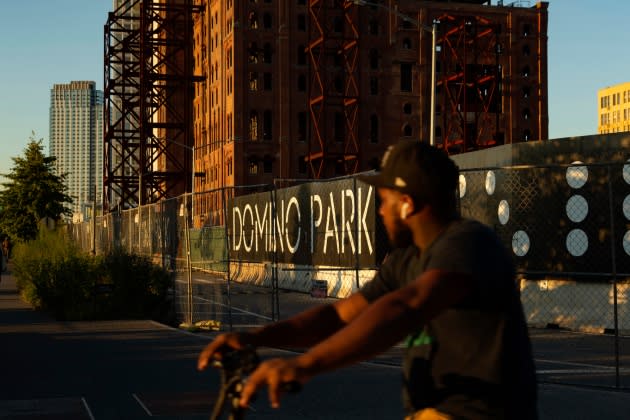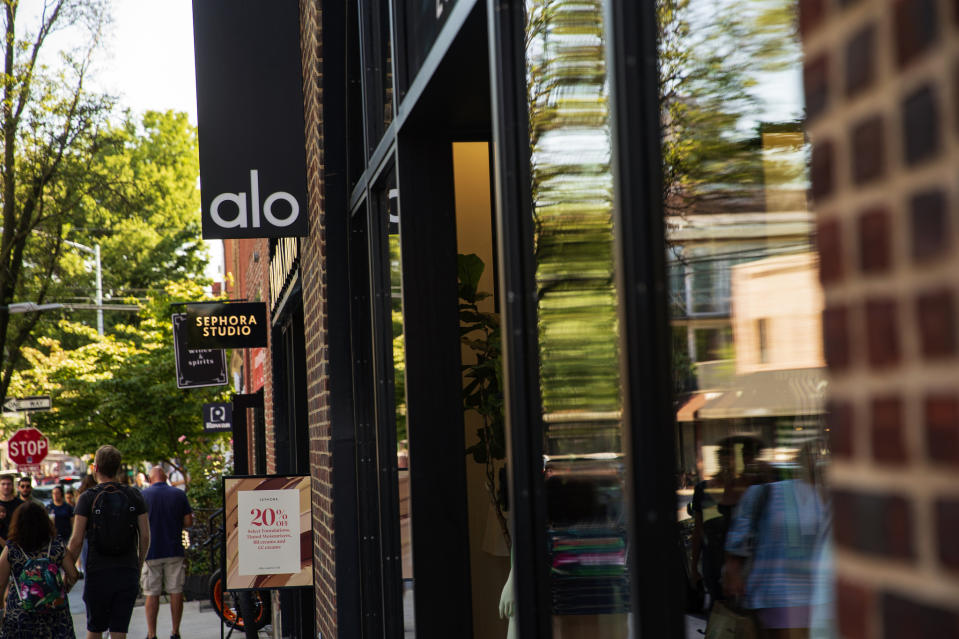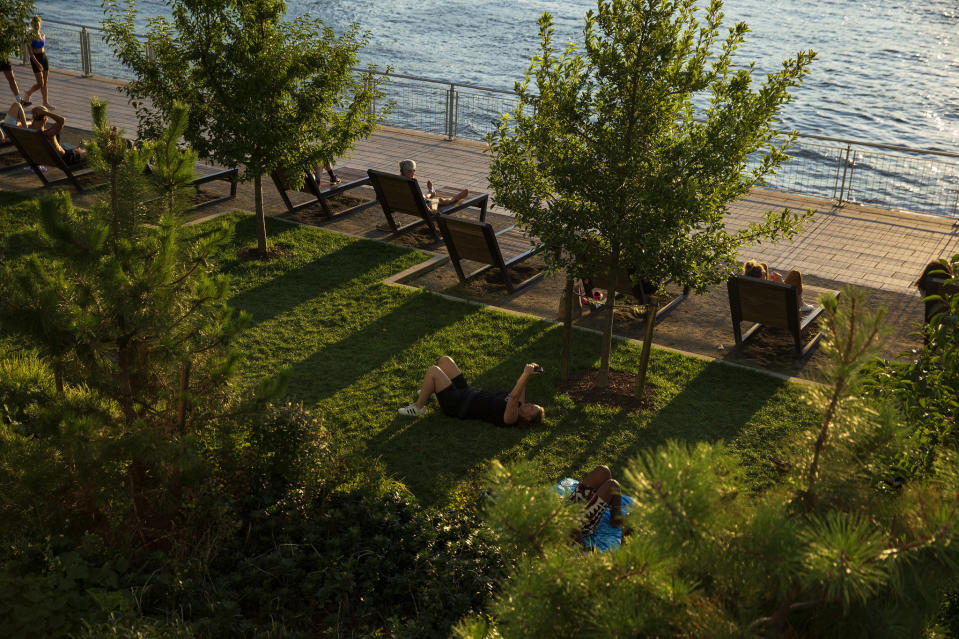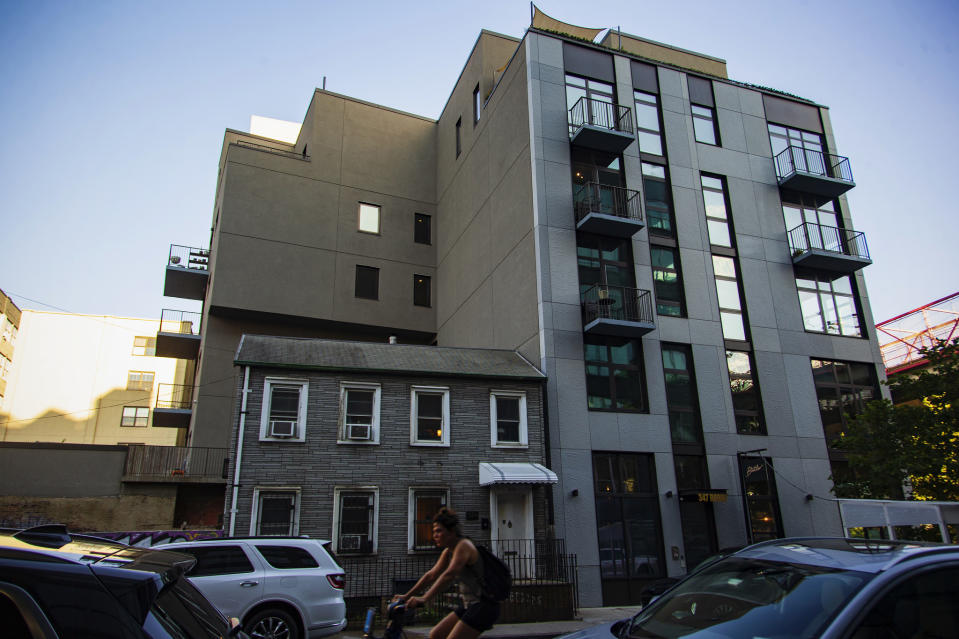Brooklyn’s Crown Jewel or Soulless Mall? The Luxury Commodification of Williamsburg

Walk into any store in Williamsburg right now and the shopkeepers know what’s coming — as do the bakers, artists and longtime residents that provide vibrancy in what has become one of New York City’s most altered neighborhoods.
When news broke in WWD last month that Hermès is planning a permanent large-format store in Williamsburg, it felt to many like the flashy cherry atop decades of head-spinning gentrification. In the span of 30 years, Williamsburg has transformed from an industrial zone to a safe-haven for Jewish, Italian and Latin American immigrants and now finally — as emblematic of New York’s larger real estate market — it’s become an outdoor shopping mall.
More from WWD
“If you had given me like 100 guesses about what is the next big brand I don’t think Hermès is on it. It’s wild to be honest, it just feels like it’s a wild thing. There’s Hermès and then what’s the next thing to come here?” said Rony Elka Vardi, founder of Catbird, a first-wave hip Williamsburg store that opened in 2004 amid a fledging neighborhood of artists and craftspeople. Vardi moved to the area in 2000, and like many, is scratching her head at Williamsburg’s evolution in the time since.
“My wife works in fashion and said, ‘That’s huge, in the fashion industry that’s the biggest company,’” said Biagio Fortunato, co-owner of Fortunato Brothers, Williamsburg’s classic Italian bakery that, in light of a changing neighborhood, has updated its 46-year-old business to offer oat milk and no-minimum credit card transactions.
Fortunato’s, a destination for spongy, marzipan-flecked rainbow cookies, has endured despite a shifting clientele. While many of Williamsburg’s newer residents appreciate its Southern Italian charm, Fortunato said others are less supportive. “They’re like — ‘This is our neighborhood now, where is the vegan stuff?’ I like it here [in Williamsburg] but I wouldn’t live here anymore, now I’m like, ‘Leave me alone, I want to be quiet,’” said Fortunato, whose father and uncles opened the bakery together shortly after landing in Brooklyn from Naples.
Fortunato’s experience is in many ways representative of a larger tension throughout Williamsburg. The neighborhood was a real estate perfect storm — one subway stop from Manhattan and bracketed by a prime waterfront and new age desirable neighborhoods including Greenpoint, Dumbo and Bushwick — all of which have also seen rapid, full-scale gentrification. It puts Williamsburg at the center of a wider North Brooklyn boom, making it an ideal nexus for shopping and dining.

Lexie Moreland/WWD
One day, Williamsburg might be a case study for urban evolution, examining how social media can spin lore around a dingy neighborhood and render it an irrepressible commercial hot spot. For now, it’s the focus of a Cornell University master’s program thesis on how to get rich in retail real estate, titled “You Need to Be in Williamsburg.”
In recent months, Williamsburg has become an example of post-pandemic opulence and unbridled spending. In many ways, it is one of the symbols of a new-New York, where this post-pandemic summer, it feels like everyone is a newly arrived and tanned 24-year-old, armed with their parent’s credit card and pent-up post-baccalaureate revenge.
It’s where a 50-year-old greasy auto repair shop can sell its garage for millions and two years later it’s a luxury high-rise condominium, its glass curtain jutting with balconies spilling over in Hay furniture imported from Denmark.
Williamsburg now resembles a high-end shopping mall more than the counterculture neighborhood brands perceive it to be.
Skate inside the Supreme bowl and then drop by Credo for an all-natural face mist. Have a picnic in Domino Park, a former haven for “sex work, drug work, if people didn’t want a car anymore they’d drive it there and leave it,” according to fashion archivist Gabriel Held, and then trot over to Mociun (pronounced: Motion) where a buzz of the door grants you entry to four-figure glass vessels and quirky diamond rings.
Hermès’ incoming is proof of a larger shift that has been grinding for years: Brooklyn’s transformation from dingy outer borough to a global commodity.
Visit a nightclub in Seoul and see young men dressed in carefully chosen T-shirts that say “Brooklyn, N.Y.,” a place that they admitted on the spot they’d never been. In the Netflix France show “L’Agence,” real estate brokers sell industrial-looking Parisian flats in the million-euro range by marketing them as “Brooklyn lofts,” exhibiting a cachet that continues to surprise longtime residents.
Reflecting on growing up in Williamsburg’s South side, Luar designer Raul Lopez said: “I remember I would lie to people sometimes and say I lived in Manhattan because Brooklyn was so judged — people thought you were trash. Now when I go to Europe people are like, ‘I love Brooklyn!’ But Williamsburg is what they mean by Brooklyn, they don’t know what Bensonhurst is, they don’t know Sheepshead Bay. Brooklyn is Williamsburg.”
Williamsburg has been the butt of memes and a symbol of generational entitlement for years. But for global luxury brands that operate within corporate offices, Williamsburg remains a bohemia. It’s a carefree, food-truck-wheeling place where young people spend a lot of money — a safe entrée to life on the fringe.
“Williamsburg is easy to understand in terms of a brand’s Brooklyn journey,” said Chris DeCrosta, founding principal at real estate advisory GoodSpace, which has been leading the retail development of Williamsburg’s prime Bedford Avenue area. “Brands come to us and say, ‘We have to open a store in Brooklyn,’ forgetting Brooklyn is a 2.5-million-person city on its own. They come here to be inspired by the creative roots and loft lifestyle and young artistic inhabitants, whether those people still live here or not.”

Lexie Moreland/WWD
GoodSpace has brokered Williamsburg leases for The North Face, Apple, Away luggage, Blackseed Bagels and last summer’s unexpected pop-up by Bottega Veneta, which helped fuel luxury’s hunger to plant roots in the area. It was followed by British designer Paul Smith, who opened a store in the neighborhood in December.
“I think that Hermès, looking at their strategy and where they’ve gone in the country — Austin, Texas, is a good example that they are making attempts to capture a younger consumer and capture them where they are. So Williamsburg makes a lot of sense in that way. I’m surprised more luxury brands haven’t followed,” said DeCrosta.
Hermès, as revealed by WWD last month, is so intent on Williamsburg that it plans to open a pop-up store in early 2023 as it prepares a larger and more permanent space for opening in 2026 (although New York is a focus for the brand generally; it will open a 20,000-square-foot flagship on Madison Avenue in September). The 5,400-square-foot pop-up will occupy a multilevel space at 91 North 6th Street, right beside the Madewell men’s store which, with its check shirts and curt suede boots, sells the “Williamsburg look” to the masses.
When Birkenstock’s lease at 111 North 6th Street comes to an end, Hermès will break ground on its permanent 8,500-square-foot store in that space. Both of Hermès’ locations are strategically located on North 6th Street, which GoodSpace said is popular with major brands because the buildings along that row are uncharacteristically large for the area and offer a different commercial scale.
Like much of New York City, commercial rent in prime Williamsburg is up about 40 percent this year, according to DeCrosta and business partner Hank O’Donnell. Average retail leases are up by an average of about $100 a square foot since pre-COVID-19 times, with some leases even as high as $320 a square foot and the average hovering around $200.
It’s all a bit humorous for a neighborhood that once shunned chains. “Subway was the first one to open but it shut down,” said Vardi. But then — in the cadence of a Dr. Seuss book — they soon came by one, by two and in direct-to-consumer start-up colors like light pink and blue.

Lexie Moreland/WWD
First came Apple, Whole Foods, Duane Reade and Sephora, the latter of which now occupies a onetime clearing house for expired beauty products, according to Held, who moved to the Williamsburg waterfront as a child in the late ’90s. Every start-up selling linen sheets soon followed — Brooklinen, Casper and Parachute among them. As did Alo Yoga, Studs, Interior Define, Warby Parker, Ganni, and, as revealed last week, Glossier.
Williamsburg’s foot traffic grew so fast that the Metropolitan Transit Authority was forced to spend millions to expand Williamsburg’s busiest subway station. In 2019, the Bedford Avenue subway platform was widened by about 6 inches on each side and exits were added to avoid an accident at rush hours, when the station would clog with thousands of commuters who had few points of egress.
But how did we get here? According to the official Brooklyn borough historian Ron Schweiger, Williamsburg has always been in the crosshairs of artisanal maker culture and gentrification. The emergence of the Manhattan, Williamsburg and Brooklyn Bridges at the turn of the 20th century caused Williamsburg — which was already home to more than 30 craft beer breweries established by German immigrants — to swell with population.
“These three bridges created a monumental increase in Brooklyn’s population — the farmland there was quickly purchased by developers who built tenements. Lower Manhattan at the time was very crowded with tenements and when Brooklyn opened orthodox Jews and Spanish-speaking communities started crossing the bridge from the Lower East Side into Williamsburg,” said Schweiger.
After the initial boom, however, the area fell into disrepair some 30 years later — mainly at the hands of federal and local city planning policies that prioritized highways over housing. In the ’70s, Williamsburg remained a cheap place to live and attracted a new wave of Italian immigrants mainly hailing from Sicily, who added to the neighborhood’s rich matrix of culture.
While an orthodox Jewish stronghold remains today on Williamsburg’s outskirts, its Italian and Latin American communities are quickly vanishing.
In the ’90s, crime across the city fell to record lows. Liza Katz, a librarian at the Brooklyn Public Library’s Center for Brooklyn History, highlighted how this tipped the scale: “Many of the creative, priced out of Manhattan’s art and counterculture scenes, ventured across the East River for gritty real estate opportunities and large creative spaces.
“Gentrification soon followed this migration, and so began a new era in Williamsburg’s evolution: a thriving maker scene where those in search of the bespoke, the handcrafted and the barrel-aged might find something new. However, as Williamsburg’s success began to explode, so, too, did its rent,” she said.
Williamsburg quickly became the Wild West for a generation of jaded hipsters, who put their mark on the neighborhood’s slanted and creaking apartment buildings — limewashing exposed brick, hanging lunar calendars and hauling record players and risograph printers up the four flights of stairs to their units.
“I mean, it was anyone starting a band, involved in music, making jewelry, artists.…We had a joke that no one had a job but everyone was working on a project. People made fun of it but there was something incredible about it being a huge pool of artistic endeavors,” recalled Vardi.
In the early 2000s, Williamsburg became a utopia for the counterculture to emerge from the George W. Bush era. Its hipster community so vehemently rejected the mass market that some even started crafting their own condiments. Williamsburg’s craft beer tradition was resuscitated with the opening of new breweries. The streets around Bedford Avenue filled with Courtney Love and Devendra Banhart look-alikes, smoking American Spirits and partaking in American Apparel’s brand of minimalistic sleaze.
The scene centered in many ways around a vibrant indie music movement that, like Williamsburg’s residents, had also been transported across the East River from the Lower East Side. Weeknight shows at DIY music spaces 285 Kent, Glasslands (now the Vice corporate offices) and in warmer months inside McCarren Park Pool — a then-abandoned city-operated pool that has since been refilled with chlorinated water — spawned a cottage industry of media outlets like Brooklyn Vegan and photography blogs like Mark Hunter’s The Cobra Snake.
Soon after though came alternatively minded financiers and trust funders looking to buy their way into the cool crowd and take advantage of the cheaper rents. So started the next wave of gentrification.
For Lopez, even the hipsters’ version of Williamsburg felt erroneous and inauthentic — if fleeting. “I feel like that weird hipster-era rush came through with fedoras and flannels, the skinny jean and Chelsea boot era where everyone thought they were cool and going to indie concerts. That’s even burned out and now it’s picnics with strollers. Williamsburg today loves a bottomless brunch,” he said of the neighborhood’s more recent trajectory.
“It started changing when the high-rises started coming in and [there was] an influx of people with money working in Manhattan. There is definitely still a creative community but there was just a lot more before. It’s more of a traditional New York neighborhood now instead of skewing so heavily into art,” said Leigh Batnick Plessner, Catbird’s co-creative director and a longtime Williamsburg resident.
Despite many New Yorkers’ glib attitude toward Williamsburg, the neighborhood is filled with visitors and residents pleased with the convenience of what is now on offer.
As O’Donnell pointed out, Williamsburg’s retail development is only indicative of its shifting population. “I have lived in the neighborhood 12-plus years and I’ve grown up with the neighborhood. I would go out to a lot of DIY music venues when I was younger, but now I’m 33 and it’s nice to have a Whole Foods. It’s things that I may not have been the biggest fan of when we first came to the neighborhood but they are ultimately beneficial to the quality of life,” he said.
Held, however, countered: “Would I trade the convenience of today to go back to the old days? Honestly I would. It took 15 years to get a nice supermarket and other than that I could do without. My street has two ping-pong bars now; everything is novelty and corny.”
He is ready for the moment that “Williamsburg becomes so uncool it gets cool again. I think it could happen. It’s on the inhabitants to make the vibe of a neighborhood and the inhabitants are just different now.”
But more bluntly Katz, pulling from the Center for Brooklyn History’s archives, sent a remark from, “Brooklyn: The Once and Future City,” by Thomas J. Campanella: “For all their avowed animus toward mainstream culture, hipsters are aggressive shoppers.”
Launch Gallery: A Look At The Luxury Commodification of Williamsburg
Best of WWD
Sign up for WWD's Newsletter. For the latest news, follow us on Twitter, Facebook, and Instagram.

